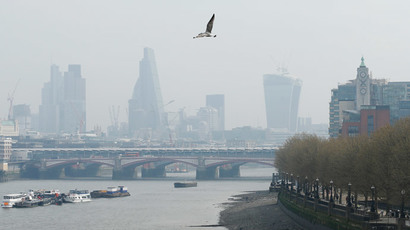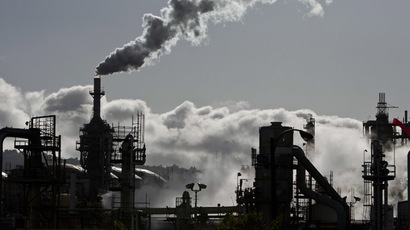India ozone pollution kills enough crops to feed nearly 100mn poor a year – study

Millions of tons of India’s major crops get damaged yearly due to air pollution – leaving a third of the country’s impoverished people short on nutrition, a joint US-India study reveals.
In the space of just one year, ozone pollution has deprived the Indian economy of millions of tons of wheat, rice, soybean and cotton – the country’s main crops. Losses of $1.29 billion translate as food for 94 million people living below the poverty line. These figures were made public in research titled “Reductions in India's crop yield due to ozone”, recently published in the journal Geophysical Research Letters.
India’s Air Monitoring Center has already pointed out the soaring rates of pollution in the country, comparing the national capital Delhi to Chinese Beijing – one of the most polluted cities in the world – as of years 2011-2014. But rising emissions also worry scientists, who are studying severe ozone pollution in some of India’s most populated regions.
Although our planet’s ozone layer shields us from most of the sun's ultraviolet radiation, ground-level ozone is, in fact, a plant-damaging pollutant. As a greenhouse gas and the main component of smog, it is formed by the reaction of sunlight on air with emissions from vehicles.
As it turned out, wheat, one of the country’s major food sources, suffers from ozone most. In 2005, yields were down by 3.5 million metric tons (3.8 million US tons), according to the new study. It can be compared to another commercial crop, cotton, which lost more than 5 percent of its 3.3 million metric ton (3.6 million US tons) annual output, at a cost of $70 million to the country’s economy.
“The [amount of lost wheat and rice] are what surprised me,”said Veerabhadran Ramanathan, a professor of climate and atmospheric sciences at Scripps Institution of Oceanography, at the University of California San Diego and a co-author of the study.

The team of authors from the US and India chose 2005 for their research as “a year representative of the effects of ozone damage over the first decade of the 21st century.” That was due to the fact that the researchers managed to get accurate crop production data for that year.
With the help of a computer model, the researchers estimated the ozone levels during crop growing seasons – Kharif and Rabi, autumn and spring – to compare it with data about how much ozone each of the four crops could withstand. Later on, they came up with the average amount of each crop’s loss due to ozone pollution.
According to Ramanathan, the study is unique in that it examines how ozone emissions are already affecting crops in India, and not the future possible effects of it, as most studies do.
What is more, scientists are quite positive about the policy changes in India, and change is needed in a country where the number of vehicles on the road has nearly tripled in the past decade (the study cites the figures given by the International Council on Clean Transportation).
Sachin Ghude, an atmospheric scientist at the Indian Institute of Tropical Meteorology (IITM) in Pune, India and lead author of the study said that the new paper could help policymakers craft new ozone pollution standards. It is especially important, as the country implements a new law that subsidizes grain for two-thirds of the country’s residents, he outlined.














